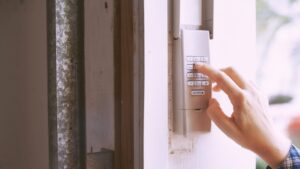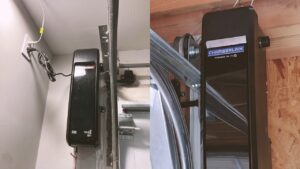Do you hear a constant chirping noise in your garage at night? If you do, there’s a huge chance you have crickets in your garage. But you’re not alone—these pesky insects affect up to 50% of garages and households in the United States.
Crickets can be a nuisance, especially when they can’t seem to stop chirping all night. They also pose health risks as they can multiply rapidly, spread diseases, and contaminate the garage environment.
However, several effective methods exist to eliminate crickets without resorting to drastic measures or unsafe chemicals. This article explores the 6 best methods to quickly and safely eradicate crickets in garage. We also discuss why crickets are attracted to your garage and how to prevent future infestation.
Why Are Crickets Attracted to Your Garage?
Crickets are typically drawn to areas that provide shelter, warmth, moisture, and a readily available food source. Additionally, garages often have crevices and openings that allow crickets to enter easily.
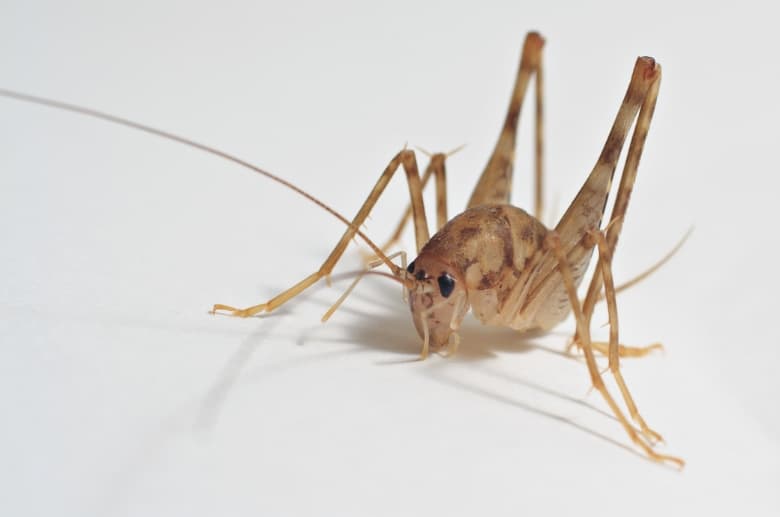
It’s also important to note that there are several types of crickets, but the camel cricket is the most common in garages. They are characterized by their light brown color and humpback appearance and are known for their jumping ability. House and Field crickets are other common cricket species that inhibit your garage. House crickets are light brown or gray and have three dark bands on their head. They are smaller than camel crickets but can still be a nuisance.
Once inside your garage, crickets can cause several long-term effects that can impact your health and the overall comfort of your home. For instance, crickets can pose health risks, such as salmonella, a bacterial infection that can be present in cricket droppings.
The following are the most common causes of cricket infestation in your garage.
Connect With A Garage Expert
Connect with local experts, Compare quotes, Get the best price.
Your Garage Has Moisture Build-up
Like other insects and pests, crickets are attracted to moist environments as they require water for survival. If your garage has poor ventilation or experiences water leakage issues, it can create a damp atmosphere enticing enough for crickets to settle and multiply.
Too Much Clutter
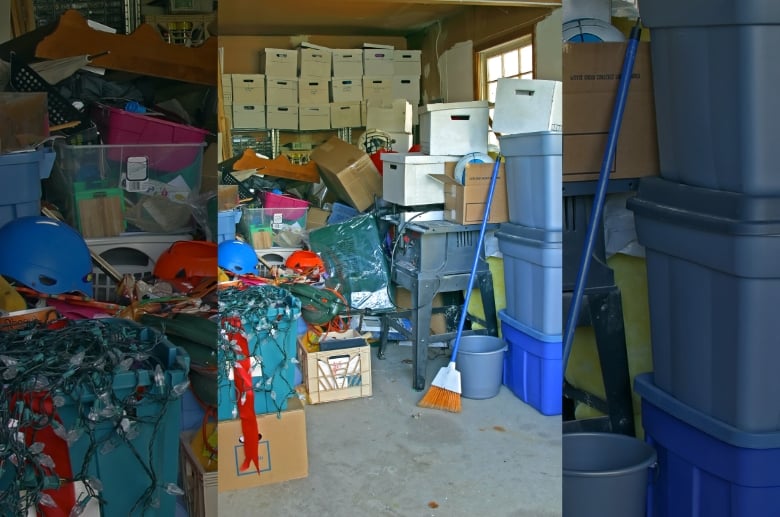
Crickets are comfortable in cluttered areas, providing numerous hiding spots and protection. If your garage is filled with boxes, piles of items, or excessive debris, it creates an ideal habitat for crickets to thrive. These spaces offer them a suitable place to lay eggs, leading to a larger infestation over time.
Abundant Food Sources
Aside from shelter, the garage also supplies crickets with ample food sources. If your garage provides easy access to food sources, like spilled pet food, food crumbs, or open containers of grains, your garage becomes a suitable option for the crickets to inhabit. They are also known to feed on various organic materials, like cardboard, paper, fabrics, and even dead insects, which are abundant in most garages.
This abundance of food not only supports a cricket population but can also attract rats to your garage, drawn by the same food sources and the presence of crickets themselves as potential prey.
Bright Lights
Crickets are positively phototropic, meaning they are attracted to light sources. They may gather near windows and doors that emit light, mistakenly perceiving it as sunlight or moonlight. This can increase the likelihood of crickets entering your garage through open doors or windows in their quest for light.
Another main reason crickets are drawn to bright lights is their instinctual response to seek warmth. Crickets are cold-blooded creatures and rely on external heat sources to warm themselves. Bright lights, such as streetlights or porch lights, emit heat as a byproduct, and crickets naturally move toward these warm areas.
Shelter From Predators
Crickets are small and vulnerable insects that seek refuge in areas where they can hide and avoid being hunted by predators like birds, frogs, toads, and mice. The dark corners, crevices, and cluttered spaces in your garage provide an ideal hiding place for crickets, increasing their chances of survival.
They also conceal themselves among stored items, tools, or piles of debris, making them almost impossible to hunt.
Signs of a Cricket Infestation in Your Garage
Here are several signs to watch out for that could indicate a cricket infestation in your garage:
1. Chirping Noise
This is the most common and obvious sign of a cricket infestation in your garage. Crickets are known for their distinctive chirping, and you may hear the chirping sound more prominently at night when the environment is quieter.
During the mating season, the chirping can intensify as male crickets try to attract females. The excess chirping during this period indicates a higher cricket population in your garage.
2. Physical Signs

Here are three important physical indicators that can assist you in confirming a cricket infestation in your garage:
- Cricket Eggs: Female crickets lay eggs in moist and dark areas. These eggs are usually small and oval-shaped, resembling tiny grains or seeds. You might come across clusters of cricket eggs hidden in corners, crevices, or cracks within your garage.
- Molted Exoskeletons: Like many insects, crickets undergo molting as they grow. During this process, they shed their exoskeletons to make room for their increasing size. If you find translucent, shell-like remnants in your garage, this indicates that crickets have been actively inhabiting your garage.
- Actual Crickets Spotted: Another obvious sign of a cricket infestation is the presence of live crickets in garage. You can easily find these nimble insects hopping around your garage, especially during their active periods, like the nighttime. Also, inspect your garage corners, cracked walls, storage areas, and cluttered spaces, as these areas can provide ample hiding places for crickets.
3. Damage to Items
Crickets feed on various materials, and their presence can damage fabrics, paper, and even plants. This is because they’re attracted to natural fibers, making fabrics vulnerable to their chewing habits.
They are also drawn to the cellulose content in cardboard boxes, books, documents, and other paper-based items. In addition, crickets are omnivorous and may feed on the foliage and stems of your potted plants or gardening supplies in the garage.
Therefore, inspect your stored clothing, upholstery, curtains, or other fabric items for small holes, frayed edges, or irregular damage patterns. Check for chewed edges, holes, or shredded paper, which can indicate their presence. Also, examine your plants for signs of leaf damage, chewed stems, or missing plant parts.
What is the Impact of a Cricket Infestation?
A cricket infestation in your garage can result in various consequences, including property damage and potential health risks. Here are the various impacts of a cricket infestation:
- Potential Damage to Items in the Garage: As mentioned earlier, crickets tend to chew on fabrics, paper, and even plants. This can result in torn clothing, damaged upholstery, ruined documents, and impaired plant health. The cost of repairing or replacing these items can quickly add up, leading to financial implications.
- Potential Disease: Like other pests, crickets can act as disease vectors, carrying pathogens that can harm human health. One example is salmonella, a bacteria that can cause food poisoning and gastrointestinal illnesses. If crickets can access your garage, they can contaminate surfaces, food, and utensils with their feces or through direct contact.
- Disruption of Peace and Comfort: The incessant chirping sound produced by crickets, particularly during the nighttime, can be highly irritating and disrupt your peace and comfort. The constant noise can interfere with sleep, relaxation, and overall well-being, making your time in the garage or nearby areas less enjoyable.
- Negative Aesthetic Impact: Cricket infestations can accumulate droppings, molted exoskeletons, and other debris in your garage. This creates an unsightly appearance and contributes to an unclean and unhygienic environment. Cleaning and restoring the affected areas may require extra time and effort.
Connect With A Garage Expert
Connect with local experts, Compare quotes, Get the best price.
How To Get Rid Of Crickets In Your Garage
If you’re dealing with a cricket infestation in your garage, it’s essential to eliminate these pests and reclaim your space. Below are some effective methods to eliminate crickets in your garage and prevent their return.
1. Sticky Traps
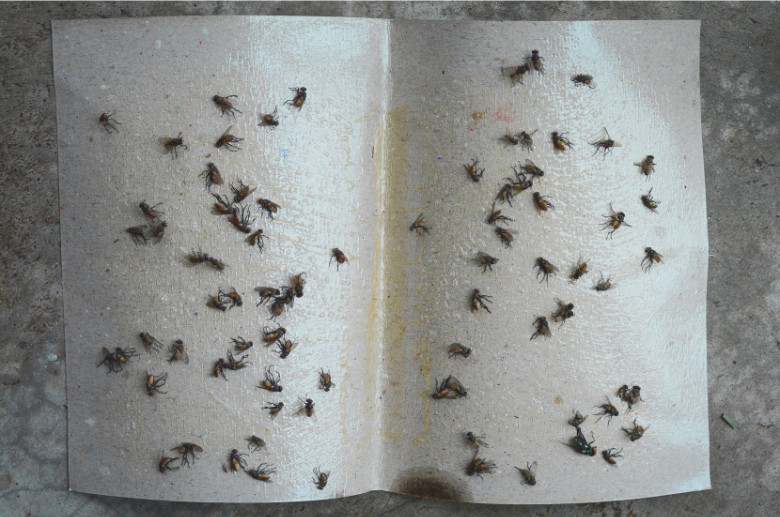
Sticky traps are an effective method for trapping crickets in your garage. These traps utilize a sticky adhesive surface to capture and immobilize the crickets. They often have a pre-baited or scented surface that appeals to the crickets’ instincts.
Here is a step-by-step guide on how to proceed with this method:
- Purchase sticky traps designed for insects or crickets. You can find them at local stores or online.
- Identify areas in your garage where crickets are most active or where you have noticed their presence. Common areas include corners, near doors or windows, or along known cricket pathways.
- Place the sticky traps in these areas, ensuring they are positioned flat on the ground or secured to walls or surfaces where crickets are likely to come into contact with them.
- The traps are typically pre-baited or scented to attract crickets. However, you can enhance their effectiveness by adding additional attractants like a small piece of bread or a sprinkle of sugar near the trap.
- Leave the traps undisturbed for a few days to attract and trap the crickets.
- Regularly check the traps and replace them when they become filled with crickets or lose their stickiness.
- To dispose of the filled traps, carefully fold them together, ensure the trapped crickets are contained, and follow local waste disposal guidelines.
2. Use Diatomaceous Earth
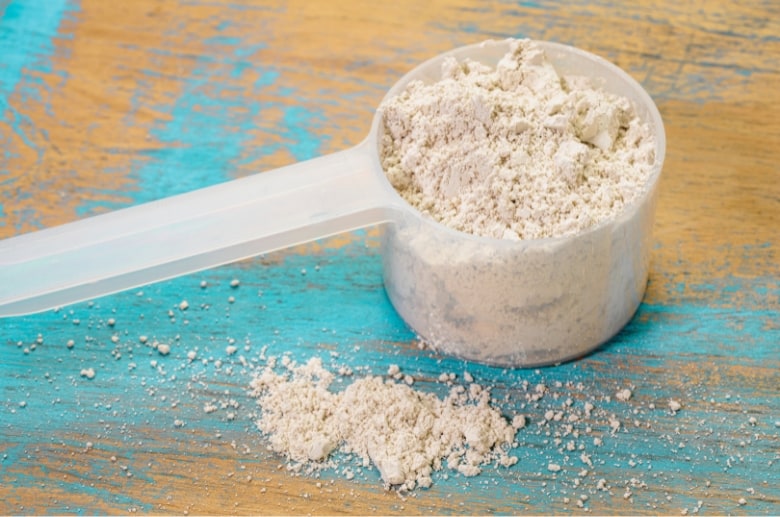
Diatomaceous earth is an eco-friendly and chemical-free solution for eliminating crickets in your garage. It works by physically disrupting the exoskeleton of the crickets, leading to dehydration and eventual death. Below is how you can use diatomaceous earth to get rid of crickets in your garage:
- Purchase food-grade diatomaceous earth from a garden center or online. Ensure that it’s specifically labeled for insect control.
- Identify areas in your garage where crickets are active or where you have noticed their presence. Focus on cracks, crevices, dark corners, and other areas where they tend to hide or move around.
- Use a shaker or a hand-held duster to apply a thin and even layer of diatomaceous earth in the identified areas. Ensure that you cover their pathways, entry points, and areas of cricket activity.
- Monitor the cricket population and repeat the application if necessary until the infestation is under control.
- Reapply the diatomaceous earth as needed, especially after rain or heavy moisture, as it may lose effectiveness when wet. Check the label for specific instructions on reapplication.
3. Use Insecticides
Insecticides are effective for eliminating crickets in your garage. These chemical formulations target the crickets’ nervous system, respiratory system, or other vital functions. When crickets come into contact with insecticides, the chemicals penetrate their exoskeleton and disrupt their physiological processes.
This can lead to paralysis, suffocation, or other adverse effects, ultimately causing the crickets to die. Below is a guide on how to use insecticides:
- Choose the right insecticide: Select an insecticide specifically formulated for cricket control. Read the product label and ensure it’s suitable for indoor use and safe for the areas you intend to treat. We recommend using diazinon or chlorpyrifos for best results.
- Read and follow instructions: Carefully read and understand the instructions provided by the manufacturer. Consider dosage, dilution rates, application methods, safety precautions, and specific recommendations.
- Prepare the insecticide: Mix or dilute the insecticide as directed on the product label. Use appropriate protective gear, like gloves, goggles, and a mask, to protect yourself from direct contact with the insecticide.
- Target infested areas: Focus on cracks, crevices, baseboards, and other hiding spots where crickets are likely to reside.
- Apply the insecticide: Apply the insecticide according to the instructions. This may involve spraying directly onto surfaces, applying with a sprayer, or using a dust applicator. Ensure thorough coverage of infested areas but avoid oversaturation.
- Treat entry points: Pay special attention to entry points like doors, windows, and gaps where crickets may enter the garage. Apply the insecticide around these areas to create a barrier preventing crickets from entering.
- Monitor and reapply if needed: Monitor the cricket activity in your garage and assess the effectiveness of the treatment. If necessary, reapply the insecticide according to the recommended interval or as instructed on the product label.
- Dispose of containers properly: Dispose of empty insecticide containers per the disposal instructions provided. Do not reuse empty containers for other purposes.
Garage Insiders Tip: Adhere to the safety precautions on the product label. Keep children and pets away from treated areas until the insecticide has dried completely. Proper ventilation is also important during and after application.
4. Declutter the Garage
As aforementioned, clutter provides hiding places and harborage for crickets, allowing them to thrive and reproduce. By decluttering your garage, you remove their hiding spots and disrupt their breeding grounds.
Additionally, decluttering improves ventilation and reduces moisture buildup, allowing for better airflow and reducing the potential for damp and humid conditions that crickets prefer.
To declutter your garage, set aside dedicated time and start by sorting through the items. Divide them into categories like keep, donate, sell, or discard. Once sorted, begin clearing the floor space by removing large items or boxes obstructing the area. This will create a more spacious and accessible workspace.
Next, utilize shelves, cabinets, or storage containers to organize and store the items you have decided to keep. Group similar items, label containers, and systematically arrange them for easy access. Lastly, properly dispose of unwanted items according to local waste management guidelines.
5. Use a Vacuum to Get Rid of Eggs
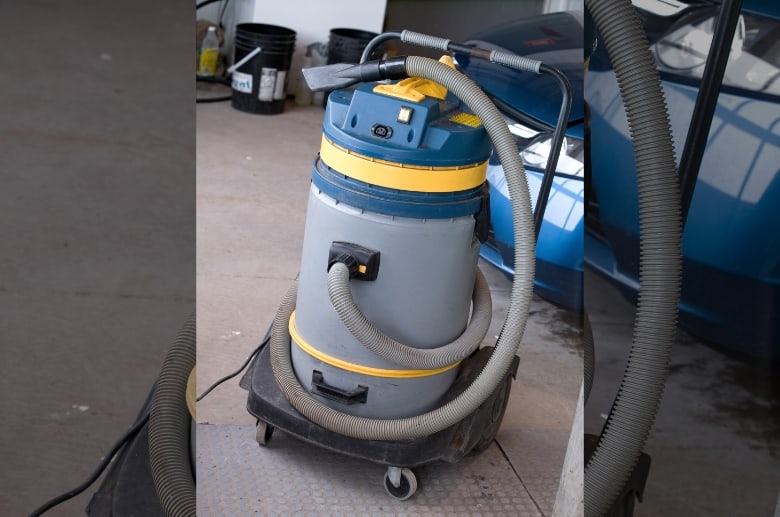
Vacuuming helps to physically remove the eggs from surfaces, preventing them from hatching and developing into crickets. To effectively use a vacuum to eliminate cricket eggs, identify areas where cricket eggs are likely to lay eggs, like the corners, cracks, and along baseboards.
Select a suitable vacuum cleaner with a hose attachment or a handheld vacuum that can reach and suction eggs from those surfaces.
After vacuuming, promptly empty the vacuum canister or dispose of the vacuum bag in a sealed plastic bag. This is essential for breaking the reproductive cycle of the crickets and preventing potential eggs from hatching and reinfesting your garage.
6. Fill in Holes and Gaps
Sealing off entry points in your garage creates a barrier that denies crickets access to your garage and establishes a presence. To effectively fill in holes and gaps, inspect your garage thoroughly, paying attention to small cracks and gaps around:
- Windows and doors
- Damaged weather stripping
- Openings around utility lines
- Vents.
Gather appropriate sealing materials once you’ve assessed and identified the holes and gaps. Depending on the size of the openings, you may require the following:
- Caulk
- Expanding foam
- Weatherstripping
- Wire mesh.
Ensure the chosen materials are suitable for the specific gaps and provide a durable and long-lasting seal.
Before applying the sealant, clean the areas around the holes and gaps to remove debris or dirt. This ensures better adhesion and a more effective seal. Then, carefully apply the chosen sealant to fill the openings, ensuring complete coverage and a tight seal.
For smaller cracks or gaps, caulk or weather stripping should suffice. Apply the caulk or insert the weather stripping into the gaps, pressing firmly to create a tight seal. You can use expanding foam or wire mesh for larger openings or holes.
Connect With A Garage Expert
Connect with local experts, Compare quotes, Get the best price.
How to Prevent Future Cricket Infestations
You can take several proactive measures to prevent future cricket infestations in your garage. These measures include the following:
1. Regular Inspections
Schedule periodic inspections for your garage regularly. Depending on your location and the level of pest activity in your area, inspections can be conducted monthly, quarterly, or seasonally.
Inspect the garage structure, stored items, and any vulnerable materials for signs of damage. Look for holes, gnaw marks, or evidence of damage caused by crickets or other pests on your fabrics, papers, cardboard, and wooden structures.
2. Sealing Potential Entry Points
Crickets can enter your garage through the tiniest openings. This makes identifying and sealing every gap or crack that could serve as an entry point crucial. Ensure you get a professional to help you with this project for maximum results.
3. Keep Your Garage Clean and Clutter-Free
Remove piles of debris, excess vegetation, or stacked items that provide hiding places for crickets. Regularly sweep and vacuum the garage to eliminate food sources and debris that may attract crickets.
4. Use of Natural Preventive Measures

There are natural ways you can deploy to prevent infestation of crickets in your garage. For instance, essential oils like lavender, eucalyptus, rosemary, and cinnamon are known to repel insects due to their strong scents.
Planting these around the perimeter of your garage or placing potted versions inside can help create a natural barrier. Additionally, essential oils like peppermint or citrus can be used as natural repellents by spraying or placing soaked cotton balls near entry points.
Predators, like birds and lizards, can also help control cricket populations. Encouraging their presence in and around your garage by providing suitable habitats and avoiding the use of pesticides that may harm them can be an effective long-term strategy.
You can also adjust your outdoor lighting to minimize attraction for crickets. Since crickets are naturally drawn to bright lights, consider using yellow or sodium vapor bulbs that are less attractive to them. You can also position lights away from entry points and windows to reduce the likelihood of crickets being lured into your garage.
Conclusion
Addressing cricket infestations in your garage is crucial to avoid damaging items, potential health risks, and irritating noise.
Additionally, you can maintain a cricket-free garage by implementing preventive measures, such as regular inspections, sealing entry points, decluttering, and using natural deterrents.
If the infestation persists or becomes overwhelming, seek professional pest control services for effective and comprehensive treatment.



